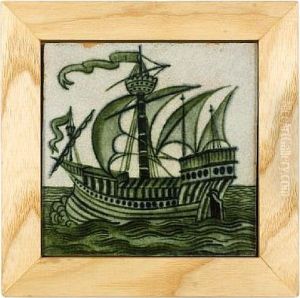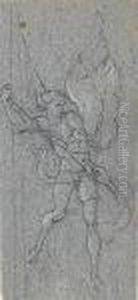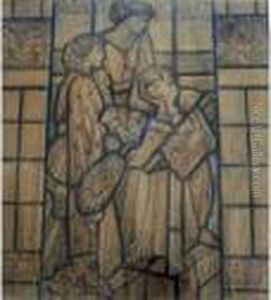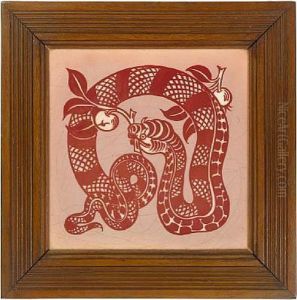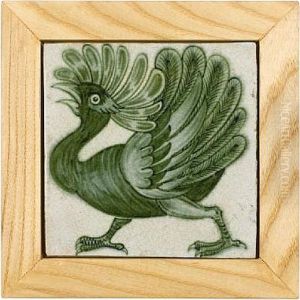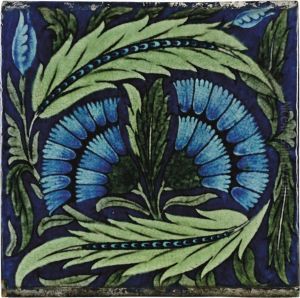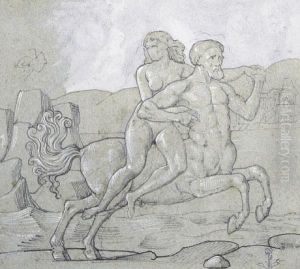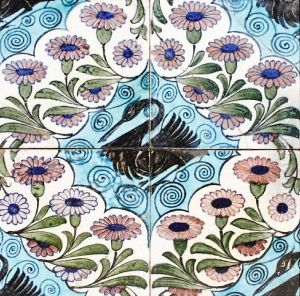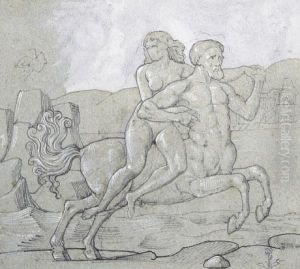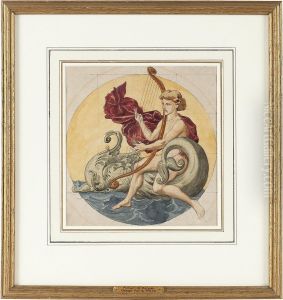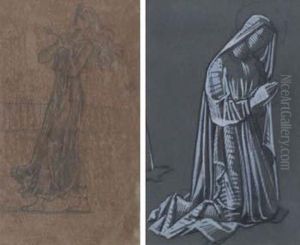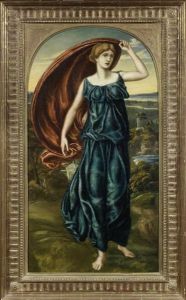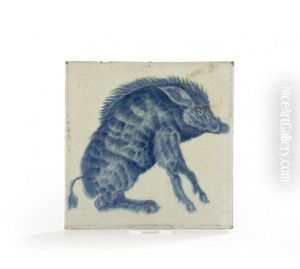William De Morgan Paintings
William Frend De Morgan was an English potter, tile designer, and novelist, a lifelong friend of William Morris and a key figure in the Arts and Crafts Movement. Born in London, he was the son of Augustus De Morgan, a prominent mathematician, and Sophia Elizabeth Frend. De Morgan was initially inclined towards the fine arts and entered the Royal Academy schools in 1859, but his interests quickly shifted towards decorative arts, influenced by his association with Morris and the Pre-Raphaelite Brotherhood.
De Morgan began his career in stained glass and furniture design before moving into ceramics and tile-making, which would become his most celebrated work. Around 1863, he established his own pottery works, striving to revive the lost techniques and vibrant colors of medieval and Islamic ceramics. His experiments led to the rediscovery of lustre glazing, a technique that became synonymous with De Morgan's name. His designs often featured fantastical creatures, floral motifs, and intricate geometric patterns, embodying the ideals of the Arts and Crafts Movement by combining traditional craftsmanship with artistic expression.
In the 1880s, De Morgan's works gained commercial success, leading to the expansion of his production facilities. However, by the end of the century, tastes began to change, and the Arts and Crafts Movement's popularity waned. Facing financial difficulties, De Morgan turned to writing, publishing his first novel, 'Joseph Vance,' in 1906. He would go on to write several more novels, which were well-received for their humor and social commentary.
De Morgan's contribution to the Arts and Crafts Movement was not limited to his artistic output; he also played a significant role in fostering the movement's ideals. He was deeply involved in the Society for the Protection of Ancient Buildings (SPAB), founded by Morris, advocating for the preservation of Britain's architectural heritage.
William De Morgan died in 1917, leaving behind a legacy that had a lasting impact on ceramic art and the Arts and Crafts Movement. His work is celebrated for its technical innovation, artistic quality, and the revival of traditional crafts, securing his place as one of the most important figures in the history of British decorative arts.
